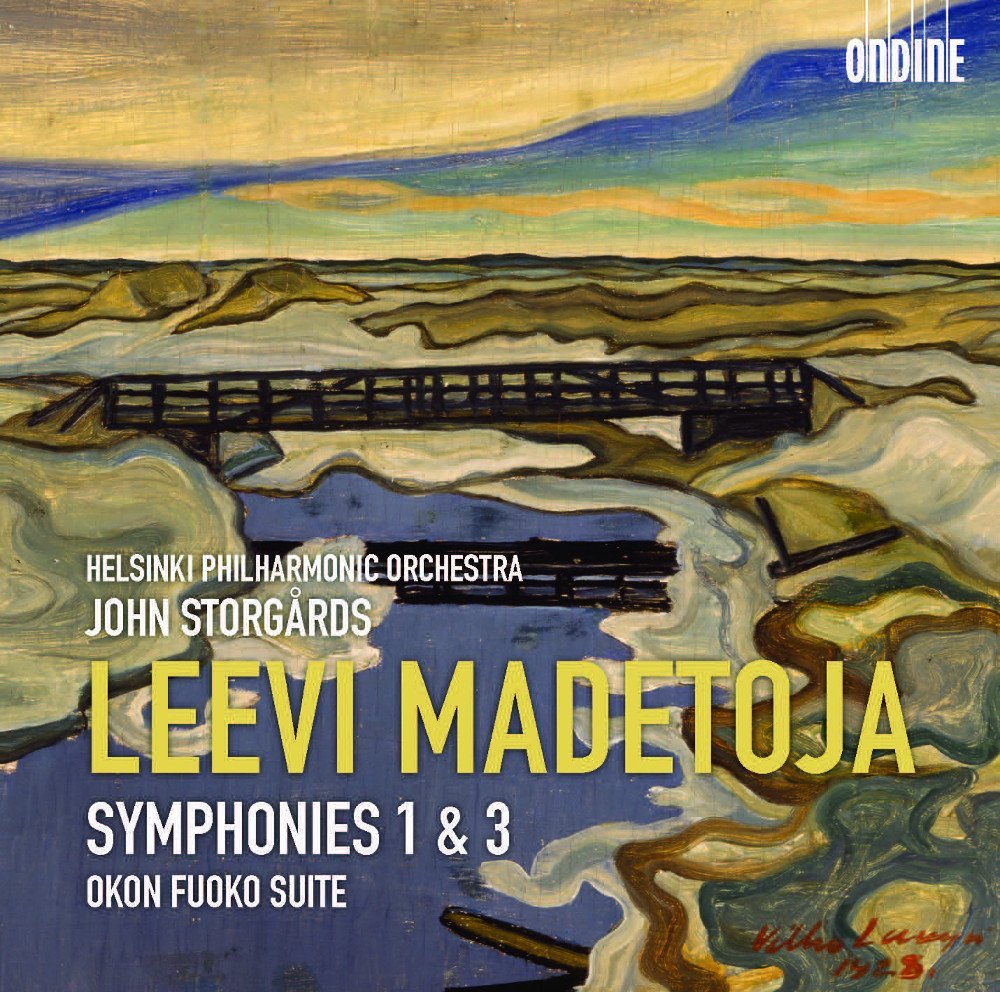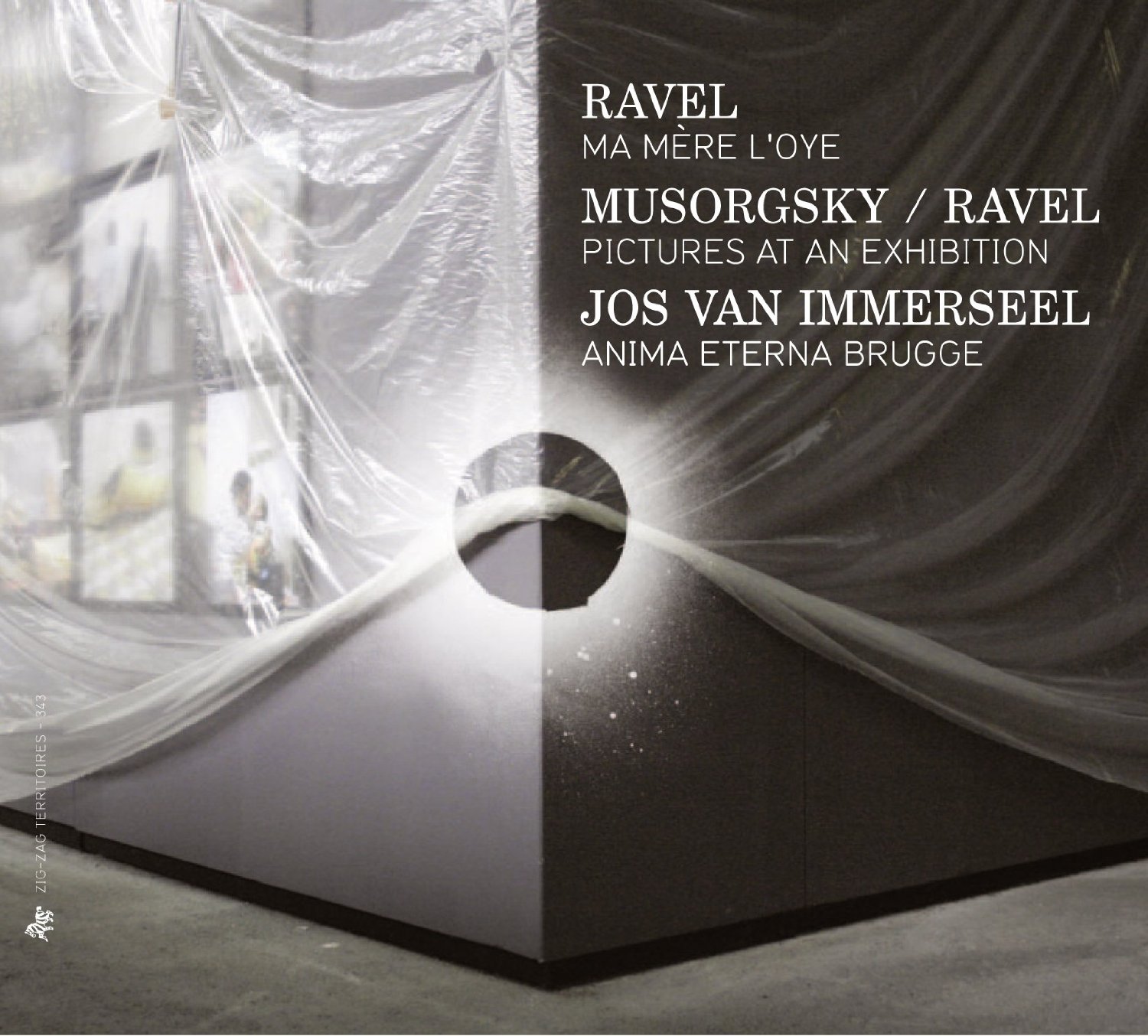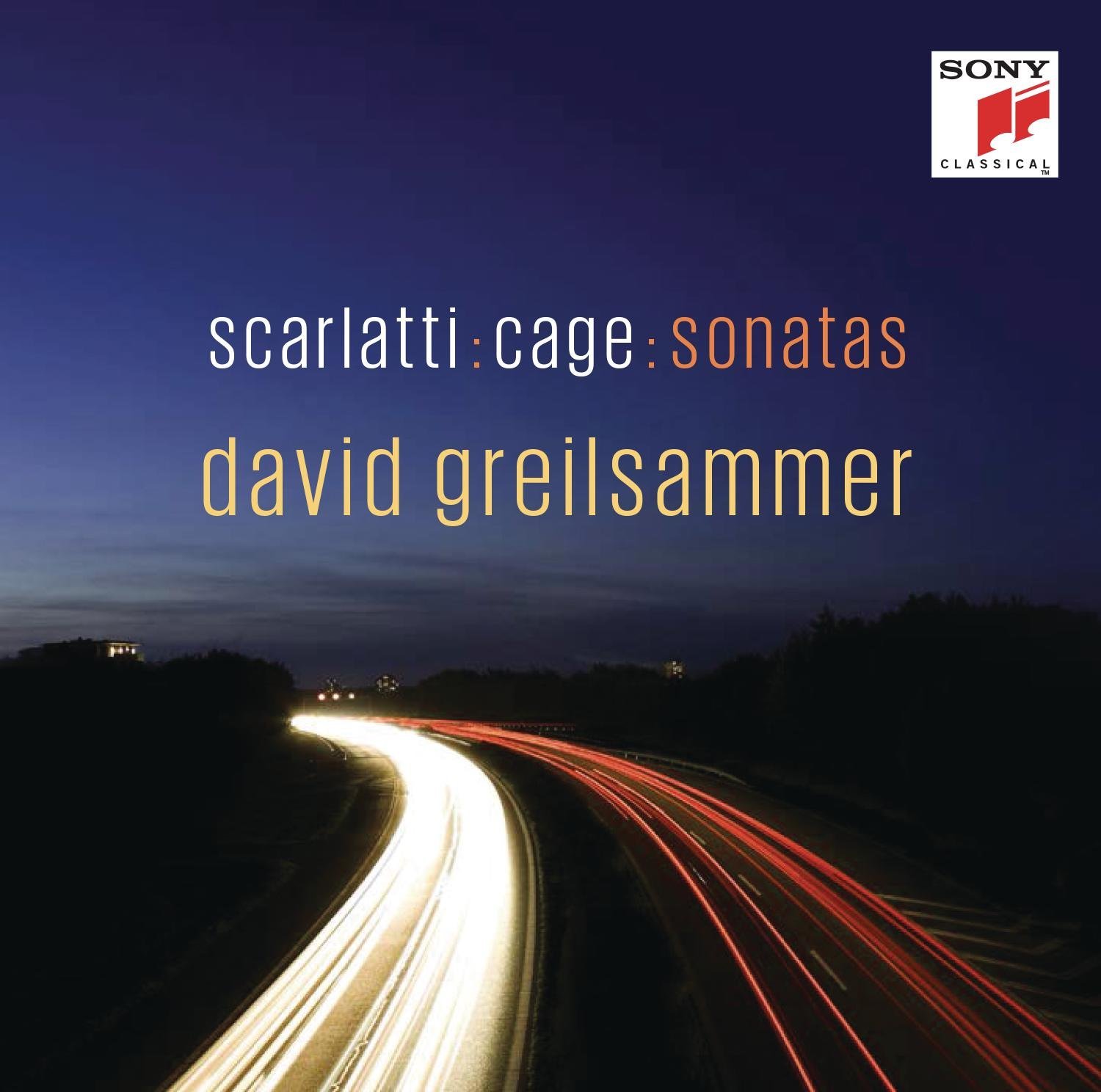Classical CDs Weekly: Cage, Madetoja, Mussorgsky, Ravel, Scarlatti | reviews, news & interviews
Classical CDs Weekly: Cage, Madetoja, Mussorgsky, Ravel, Scarlatti
Classical CDs Weekly: Cage, Madetoja, Mussorgsky, Ravel, Scarlatti
Finnish symphonies, 20th century orchestral music on period instruments and a piano recital pairing two mavericks


The first movement of Leevi Madetoja's Symphony no 1 approaches perfection. The opening gesture is arresting, and the lilting second subject is gorgeous. Even more impressive is Madetoja's restraint and structural nous. The whole thing lasts less than seven minutes. It's beautifully scored. There's not a wasted note, and it's tempting to think that saying more with less was an attribute he picked up from his friend and teacher Sibelius. Madetoja's music isn't quite as individual, with its 19th century models easy to spot. But, as first symphonies go, it's a peach. It's brilliantly played here by John Storgårds's nimble Helsinki orchestra. They capture the lightness and the ebullience, and Ondine's pristine sound lets us appreciate Madetoja's skills as an orchestrator. The larger-scale Second Symphony has already been recorded by these forces, and they complete the cycle with no 3. There's something Sibelian about Madetoja's fondness for sustained pedal notes, but the sense of grace and serenity is highly individual. The Adagio's opening theme is marvellous, the finale's dance elements intoxicating. The coda is delicious, as if the symphony is giving us a shrug and a wink before shuffling offstage.
Just as entertaining is a short orchestral suite from the 1927 opera Okun Fuoko, the tale of a Japanese puppet maker. As heard here, the music is bewitching – harmonically quirky, tuneful and brilliantly scored. Madetoja's translucent string writing is a consistent joy, and there's some bold writing for untuned percussion. Listen out for that tamtam. A superb introduction to an undervalued composer.
Jos van Immerseel's Belgian period instrument outfit have recorded invigorating Beethoven and Schubert cycles as well as tackling 20th century repertoire – their Poulenc and Debussy discs are well worth investigating. This release opens with a rather lovely rendering of Ravel's Ma Mère l'Oye suite, the sparer sonorities of Anima Eterna Brugge miles away from the string-laden gloop which can disfigure larger-scale Ravel performances. There's some delectable percussion adding colour to the third movement's gamelan pastiche. Séverine Longueville's antique French contrabassoon rasps and growls to magnificent effect in Les entretiens de la Belle et de la Bête. Ravel's fairy garden shimmers. Beautiful, in other words.
The coupling is equally entertaining. Ravel's over-fussy orchestration of Mussorgsky's Pictures can fall flat – perhaps because its crystalline refinement can seem at odds with the magnificent rawness of the piano originals. But Immerseel's players achieve wonders here; characterful brass never overwhelms and the woodwinds sing out with piercing clarity. Samuel Goldenberg and Schmuÿle sound like operatic sparring partners. The dead air in Mussorgsky's Catacombs chills, and there's deathly stillness at the heart of Cum mortuis in lingua morta. 
Coupling Domenico Scarlatti with John Cage makes a lot of sense. Scarlatti's highly expressive musical language can still sound unerringly modern, and Cage's sonatas for prepared piano challenge our ideas of what a keyboard should sound like. And neither composer's idea of what constitutes a sonata conforms to expectations. Purists might flinch at David Greilsammer's full-blooded, romantic approach to Scarlatti, but these enchanting, spiky little pieces sound wonderful on a modern grand. And juxtaposing them with Cage works a treat; the haunting bell sounds of Cage's Sonata XIII are joyously swept aside by Scarlatti's K531 Sonata in E, three minutes of quirky, pealing joy, which are then followed by one of Cage's funkier, more percussive sonatas. You could swear blind that there's a marimba buried deep in the mix, but the effects are achieved with strategically-placed rubber bands, bolts and erasers. I'd not previously realised that the idea came to Cage in 1938 after he'd been commissioned to write a ballet score using percussion instruments. Realising that the performance space was too small for the number of performers, he customised a nearby piano instead.
Scarlatti's elegant K27 Sonata in B minor dances to a soft conclusion, immediately followed by the loud B minor chords of Cage's Sonata I. If you're not expecting it, you'll jump out of your seat. The dissonant pileup that occurs 20 seconds into Scarlatti's K175 in A minor is astonishing. You half-suspect it's the sound of Greilsammer banging his head on the keyboard. And then the music picks itself up as if nothing's happened. The best juxtaposition is saved for the end; Cage's hypnotic, catchy Sonata V leads straight into a frisky account of Scarlatti's K492. Sony's sound is gloriously warm and detailed, but the booklet misses a trick by providing so little information about the pieces played.
Explore topics
Share this article
The future of Arts Journalism
You can stop theartsdesk.com closing!
We urgently need financing to survive. Our fundraising drive has thus far raised £49,000 but we need to reach £100,000 or we will be forced to close. Please contribute here: https://gofund.me/c3f6033d
And if you can forward this information to anyone who might assist, we’d be grateful.

Subscribe to theartsdesk.com
Thank you for continuing to read our work on theartsdesk.com. For unlimited access to every article in its entirety, including our archive of more than 15,000 pieces, we're asking for £5 per month or £40 per year. We feel it's a very good deal, and hope you do too.
To take a subscription now simply click here.
And if you're looking for that extra gift for a friend or family member, why not treat them to a theartsdesk.com gift subscription?
more Classical music
 Bizet in 150th anniversary year: rich and rare French offerings from Palazzetto Bru Zane
Specialists in French romantic music unveil a treasure trove both live and on disc
Bizet in 150th anniversary year: rich and rare French offerings from Palazzetto Bru Zane
Specialists in French romantic music unveil a treasure trove both live and on disc
 Scottish Chamber Orchestra, Ibragimova, Queen’s Hall, Edinburgh review - rarities, novelties and drumrolls
A pity the SCO didn't pick a better showcase for a shining guest artist
Scottish Chamber Orchestra, Ibragimova, Queen’s Hall, Edinburgh review - rarities, novelties and drumrolls
A pity the SCO didn't pick a better showcase for a shining guest artist
 Kilsby, Parkes, Sinfonia of London, Wilson, Barbican review - string things zing and sing in expert hands
British masterpieces for strings plus other-worldly tenor and horn - and a muscular rarity
Kilsby, Parkes, Sinfonia of London, Wilson, Barbican review - string things zing and sing in expert hands
British masterpieces for strings plus other-worldly tenor and horn - and a muscular rarity
 From Historical to Hip-Hop, Classically Black Music Festival, Kings Place review - a cluster of impressive stars for the future
From quasi-Mozartian elegance to the gritty humour of a kitchen inspection
From Historical to Hip-Hop, Classically Black Music Festival, Kings Place review - a cluster of impressive stars for the future
From quasi-Mozartian elegance to the gritty humour of a kitchen inspection
 Shibe, LSO, Adès, Barbican review - gaudy and glorious new music alongside serene Sibelius
Adès’s passion makes persuasive case for the music he loves, both new and old
Shibe, LSO, Adès, Barbican review - gaudy and glorious new music alongside serene Sibelius
Adès’s passion makes persuasive case for the music he loves, both new and old
 Anja Mittermüller, Richard Fu, Wigmore Hall review - a glorious hall debut
The Austrian mezzo shines - at the age of 22
Anja Mittermüller, Richard Fu, Wigmore Hall review - a glorious hall debut
The Austrian mezzo shines - at the age of 22
 First Person: clarinettist Oliver Pashley on the new horizons of The Hermes Experiment's latest album
Compositions by members of this unusual quartet feature for the first time
First Person: clarinettist Oliver Pashley on the new horizons of The Hermes Experiment's latest album
Compositions by members of this unusual quartet feature for the first time
 Gesualdo Passione, Les Arts Florissants, Amala Dior Company, Barbican review - inspired collaboration excavates the music's humanity
At times it was like watching an anarchic religious procession
Gesualdo Passione, Les Arts Florissants, Amala Dior Company, Barbican review - inspired collaboration excavates the music's humanity
At times it was like watching an anarchic religious procession
 Classical CDs: Camels, concrete and cabaret
An influential American composer's 90th birthday box, plus British piano concertos and a father-and-son duo
Classical CDs: Camels, concrete and cabaret
An influential American composer's 90th birthday box, plus British piano concertos and a father-and-son duo
 Cockerham, Manchester Camerata, Sheen, Martin Harris Centre, Manchester review - re-enacting the dawn of modernism
Two UK premieres added to three miniatures from a seminal event of January 1914
Cockerham, Manchester Camerata, Sheen, Martin Harris Centre, Manchester review - re-enacting the dawn of modernism
Two UK premieres added to three miniatures from a seminal event of January 1914
 Kempf, Brno Philharmonic, Davies, Bridgewater Hall, Manchester review - European tradition meets American jazz
Bouncing Czechs enjoy their Gershwin and Brubeck alongside Janáček and Dvořák
Kempf, Brno Philharmonic, Davies, Bridgewater Hall, Manchester review - European tradition meets American jazz
Bouncing Czechs enjoy their Gershwin and Brubeck alongside Janáček and Dvořák
 Solomon, OAE, Butt, QEH review - daft Biblical whitewashing with great choruses
Even a top soprano and mezzo can’t make this Handel paean wholly convincing
Solomon, OAE, Butt, QEH review - daft Biblical whitewashing with great choruses
Even a top soprano and mezzo can’t make this Handel paean wholly convincing

Add comment